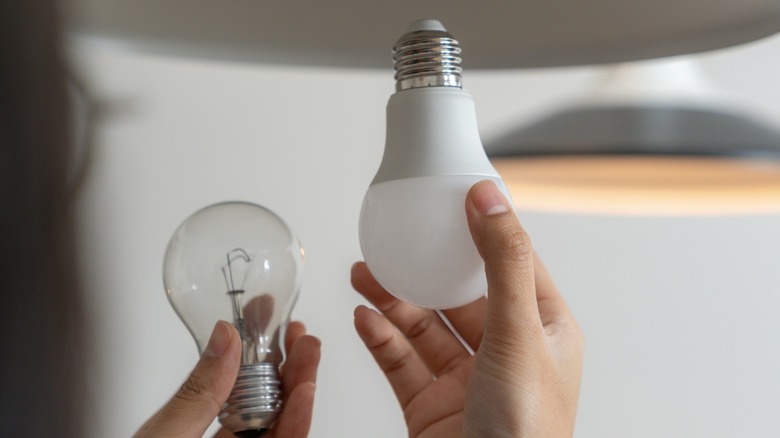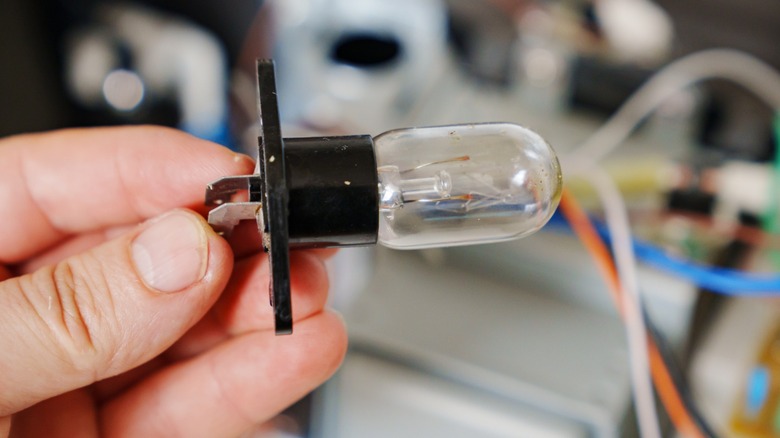Appliance Light Bulb Vs. Regular: What's The Difference And Can They Be Interchanged?
One of the things you learn as a homeowner is how many different types of light bulbs there are. The ones that go into your appliances are quite different from the ones you fit into a lamp or ceiling fixture. Even if they look alike, you can't just use them interchangeably. So, let's say the light bulb in your home appliance goes bad. It might be convenient to simply replace it with a spare regular bulb, but that's a big mistake most people make with light bulbs.
Appliance bulbs are designed to handle extreme conditions such as the intense heat inside an oven, the freezing temperature of a refrigerator, and all the vibration of a washing or drying machine. They also come in compact sizes to fit into tight spaces. A regular household bulb, on the other hand, is not built to survive that level of intense heat, cold, or movement. In an oven, a standard bulb can burn out in minutes or, worse, crack from thermal stress. It's not fun to have to throw out a good pot of roast because the wrong bulb shattered in the oven. It may survive in a refrigerator, but that's not ideal, considering the cold air and the constant opening and closing of the door. Regular bulbs are designed with standard filaments and are not supposed to be exposed to that kind of pressure.
Can you use an appliance bulb in a regular fixture?
It's not a good idea to use an appliance bulb in a regular fixture either. Appliance bulbs are usually dimmer. They're meant to light up small spaces, like the inside of an oven or fridge, not an entire room. For your lamps or fixtures, there are so many different types of LED light bulbs to choose from. And picking the right light fixture can really improve your space.
If you're still wondering whether you can use a regular bulb in an appliance, the answer is also no. Before replacing any bulb in an appliance, always check the manual or the sticker near the socket. If it specifies a certain wattage or says to use an appliance-rated bulb, don't ignore that. These bulbs typically come labeled "oven bulb," "refrigerator light," or just "appliance-rated." This points to the fact that each bulb is designed to handle the unique nature of that appliance.
Now, in terms of wattage, appliance bulbs usually draw somewhere between 10W to 50W and often use an E17 screw base, which is smaller than the standard E26 base found on regular bulbs. That's why if you try swapping them, they might not even fit. Plus, using a bulb with a higher wattage than recommended can overload the circuit or produce too much heat. The best-case scenario is the bulb just goes out rather quickly. But the worst-case scenario ends with the high voltage damaging the appliance, voiding your warranty, or even causing an accident.

